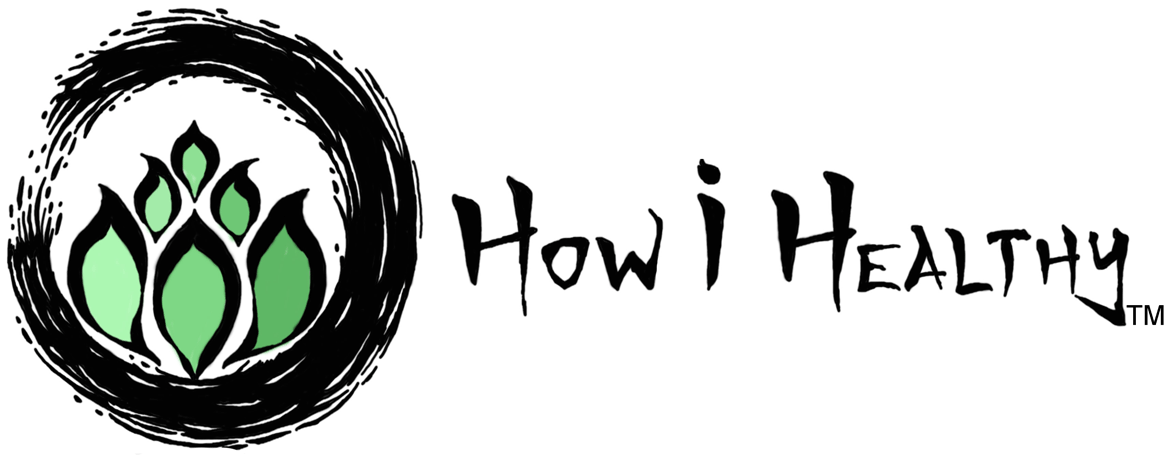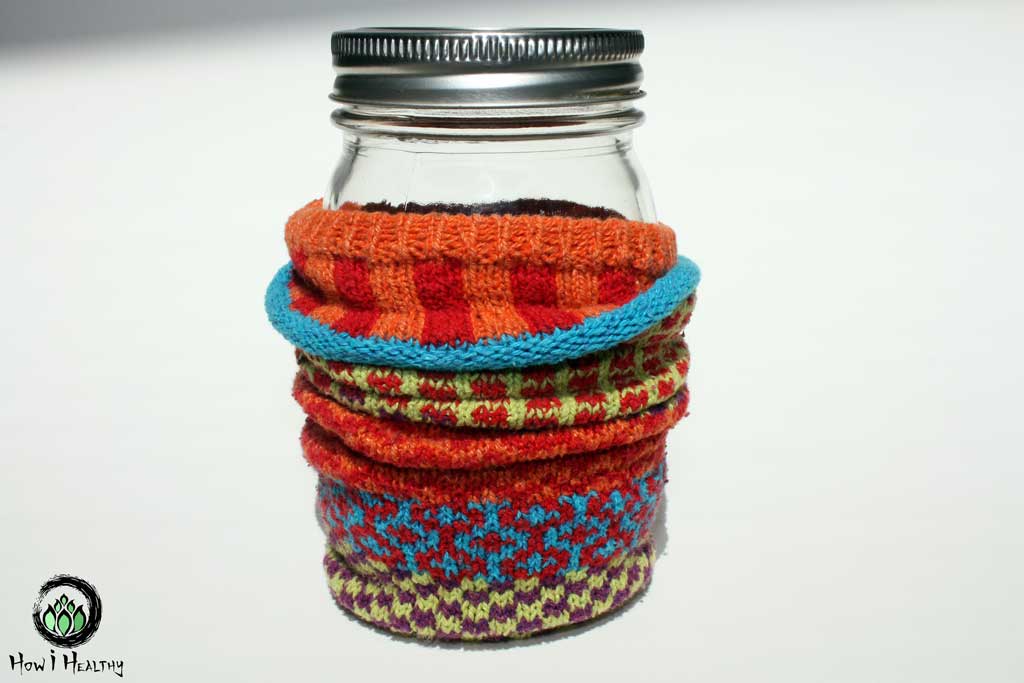In This Article, We'll Cover:
- Big Picture Concepts About Sustainable & Ethical Living
- Sustainable Living Tips, Practices, & Mindsets You Can Implement Today
- Why I Don’t Shop at Amazon®
- How i Healthy’s Internal Struggle Against Conscientious Consumerism
If you’ve read about My Favorite Products or How to Avoid Greenwashing, you’ll notice recurring themes about what sustainable & ethical living looks like for me.
Those articles get into the details. And, I’ll be the first to admit, sometimes there’s a lot to read.
This guide is different from the others. It moves beyond specific brand or product recommendations.
Instead, it’s a summary of my favorite sustainable living tips and mindsets.
Big picture concepts I keep in mind as I go about life.
Big Picture Sustainable Living Tips
1. It’s About Buying Less, Not More.
The best sustainable living tip?
Buy less stuff. Not more.
And buy less of the “right” stuff too.
There are lots of labels out there: Green living, eco-friendly living, zero waste, plastic-free, and so much more. And these alternative lifestyles can easily become consumerist lifestyles.
When I started letting environmental and ethical factors impact my buying habits, I faced a conundrum. The eco-friendly “must haves” pulled on my consumerist heartstrings.
The bamboo utensils, the silicone baggies, the metal water bottles! The environmentalist’s “essentials”, and the “Zero Waste Kits”.
How could I be environmentally conscious without a bamboo fork?!
I needed to buy ALL THE THINGS.
Then I realized:
- Just use a regular fork on-the-go.
- Coffee in my mason jar with lid and sock works great as a travel mug (See banner photo, ain’t it cute!?).
- I can reuse any glass bottle for a water bottle.
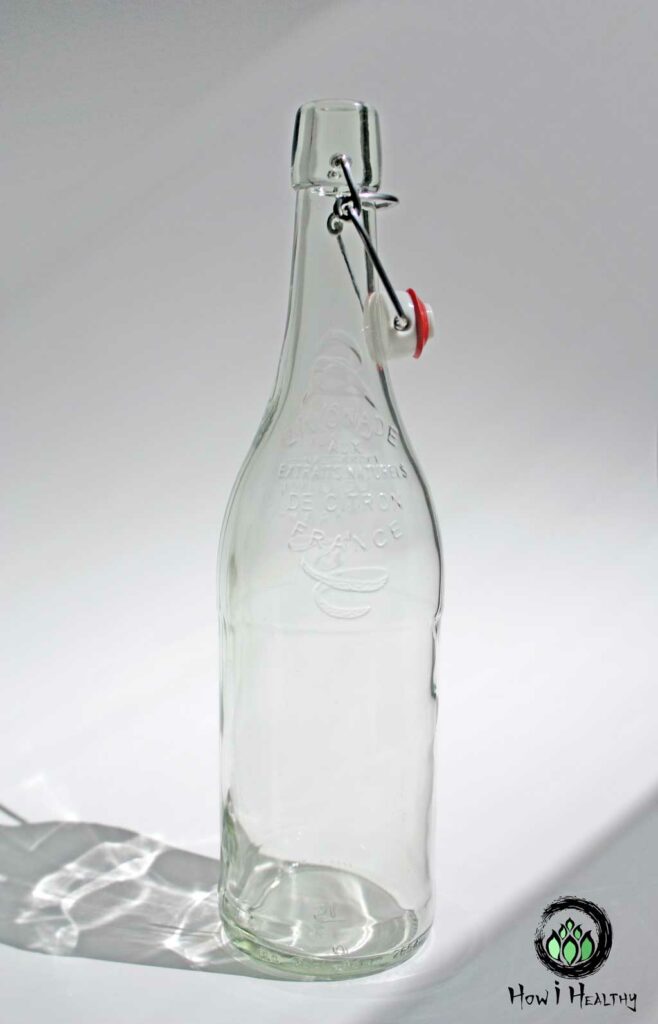
Bonus? I also enjoyed a delicious beverage!
Sure, parts of my home aren’t perfect.
I still have plastic stuff from before I got savvy with my purchases.
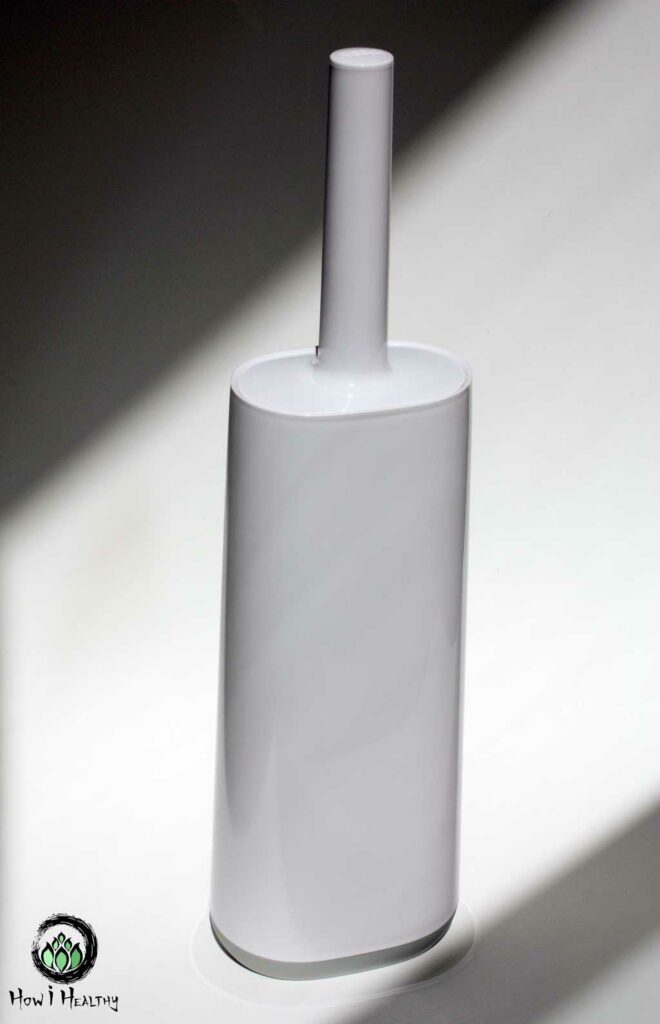
The point is: There’s lots of stuff, even sustainable/ethical products, we might not need.
The line between consumerism and green living can be thin.
The eco-friendly “must haves”, however well intentioned, can perpetuate consumerism and cause more environmental damage than they solve.
But at the same time, most folks still buy stuff. And that’s okay too.
Buying stuff is okay.
And buying stuff is powerful.
Which brings me to big picture concept #2.
If you’re going to buy something, make it count for something you support.
2. What Does Your Money Perpetuate?
As consumers, we have a thing called purchase power. Our purchases, our dollars, impact companies and the individuals we buy from. Without our purchases, they don’t exist.
Organic agriculture, for example.
Once a fringe business, has now boomed across the world. Organic product sales, registered organic farms, and registered organic farmland acreage has doubled (and tripled in some cases) during the last decade. Consumer demand spurred supply. (4, 5, 6)
It’s not only what we do, or what we buy. But also, how we do it and where we buy from.
Your money is an endorsement.
It can perpetuate business practices, both the good and the bad.
Your money can endorse:
- Child labor, forced labor, & toxic worker conditions.
- Jobs and money taken away from your home country.
- Living wages & safe worker conditions.
- Plastic dependency & environmental pollution.
- Small businesses and your local economy.
- Sustainable supply chains.
There’s a few things in that list I’d much rather support.
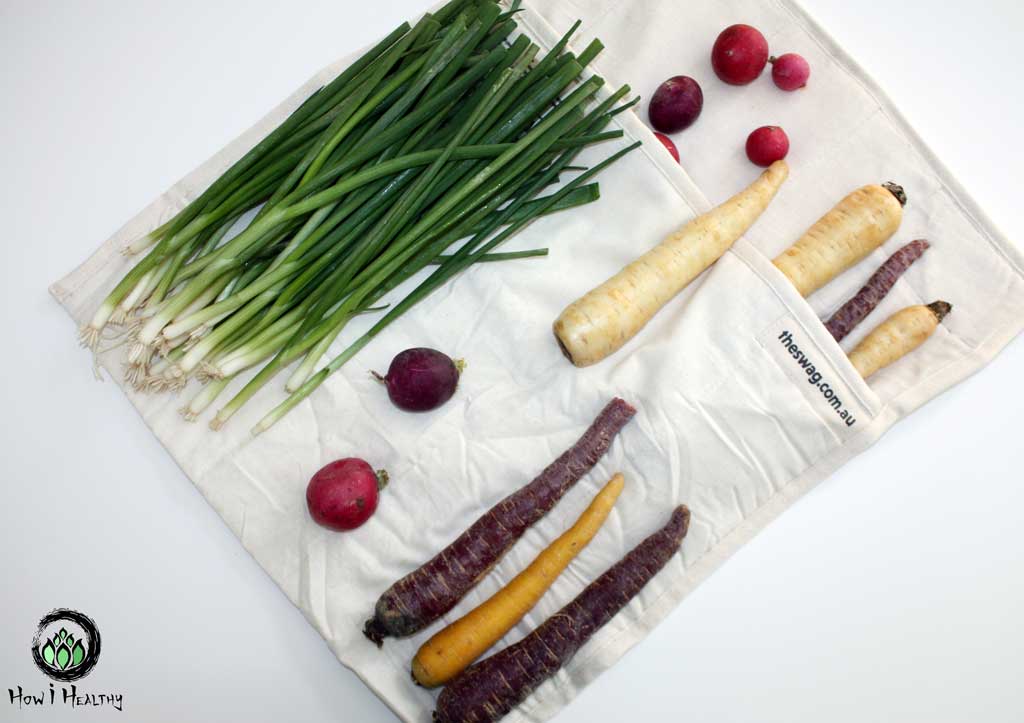
Just check out The SwagTM.
This actually useful produce keeper reduces food waste by keeping produce fresh for 14+ days.
Better than that? Over 18% of The SwagTM net profits have gone to Destiny Rescue, a non-profit that rescues & rehabilitates children trapped in human trafficking. In 2022 alone, The SwagTM helped 3,144 children.
Now that’s a product I can support. Practical, useful, and helps the world. It’s plastic-free yes, but it does so much more.
Add "where, who, & how" to move beyond simple questions like:
“is it plastic-free?”
There's more to it than that.
There’s more to sustainability & ethical living than plastic.
And plastic-free packaging doesn’t always mean ethically made or even lower carbon footprints. But I’m jumping ahead. The point is:
What & who will your money fund?
But keep in mind:
3. You Don’t Have to do ALL the Things
Sustainable & ethical living is “you do you” alternative living at its best.
Because here’s the thing: Living alternatively, however that looks, can require more time, be more expensive, or be geographically dependent.
Alternative lifestyles can be lifestyles of privilege.
Socioeconomic factors can affect our ability to live the life we want. Buying organic or ethically made products can be more expensive. Making hummus from scratch can be time consuming. Geographical location or transportation situations can reduce shopping options. Our health can affect our choices. And that’s okay.
Sustainable & ethical living takes everything into account. Including you.
It’s on your own terms. You can do what works for you.
General Sustainable Living Tips
We’ve got the big picture, now let’s explore some details.
Here’s a summary of my best sustainable & ethical living tips.
4. Cheap Means Someone Else or the Earth is Paying the Difference
Cheap products usually mean forced labor, unsafe working conditions, unsustainably harvested materials, and environmental pollution. Either the planet or its people are paying part of the bill for you.
There’s a reason why products made in Canada, EU, UK, or USA often cost more. Because production & labor costs more. Because those workers are paid living wages. And because the facilities they work in meet safety & environmental standards.
Cheap can also mean a counterfeit product. Which was probably produced with few worker and environmental protections too. (28, 29, 30)
A product with transparent supply chains, worker protections, sustainable harvesting, or third-party certified products often cost more. And 66% of consumers are willing to pay more for these types of products. Yay! But the big problem is that not-so-ethical companies realized this and exploit it. (42)
Unethical and bad-for-the-environment companies/products touting “eco-friendly” slogans bring us to greenwashing.
5. Greenwashing is Everywhere. Be Skeptical.
I can’t talk about sustainability or ethical living without mentioning greenwashing. At least five times.
That’s because it’s everywhere, easy to fall for, and annoys the heck out of me.
Companies exploit our desires to do better for the world.
With an arsenal of marketing tricks to fool us, companies profit while the Earth, (and our wallets), suffer the consequences. (42)
Just look at laundry detergent strips. Those “plastic-free” & “biodegradable” detergent strips. Sounds awesome. Not so awesome? They also have polyvinyl alcohol. That means plastic. (75)
And that plastic, despite marketing claims, does not fully biodegrade. Research shows most wastewater treatments plants cannot breakdown PVA. PVA can also leech into groundwater and disrupt the exchange of carbon dioxide, thus impacting aquatic ecosystems. (75)
So, people buying laundry strips think they are doing better for planet and people. They paid a premium price for it too (those strips aren’t cheap!). But in the end, it was just another greenwashed money pit.
(P.S. if you’re looking for a actually plastic-free laundry detergent from an awesome ethical company, check out: Meliora®)
And read this Greenwashing Guide so you know what else to look out for.
And check out this separate guide to Sex Toy Greenwashing.
Greenwashing in the sex toy industry is what inspired me to start How i Healthy in the first place.
I’ve also written guides to Sustainable & Ethical Sex Shops and Sex Toy Manufactures because it’s such a mess to navigate.
And inevitably, when I talk about greenwashing, I bring up my next point: bioplastic and “compostable”. Both are environmentally complicated. They aren’t perfect.
But consumers don’t know that. And companies exploit that too.
6. Bioplastic & “Compostable” Has Fine Print. Read It.
From toothbrushes to Sex Toys, bioplastic products and “compostable” claims are popping up everywhere.
As well intentioned as bioplastic and “compostable” is, both come with fine print. Very fine print.
First, what is bioplastic?
A material made from plants (often corn, sugarcane, or starch) instead of petroleum/fossil fuels. (24, 25)
So far so good. But wait. Bioplastics can vary:
- Some are biodegradable.
- Some can be compostable under certain conditions.
- Some can be recyclable in the proper facilities.
- Some can be engineered to last as long as petroleum plastic.
- Some are a “mixed plastic” and still contain petroleum-based plastics.
(24)
There’s a lot of “some” and “can be” in that list.
That’s because disposal/end-of-life protocols are different for each type of bioplastic. And there’s lots of types of bioplastic. The end-of-life protocols are often misunderstood by consumers, thanks to misleading greenwashing.
Here’s some common consumer misconceptions:
1. “Compostable” means “Home Compostable”
False!
Compostable bioplastics require industrial composting facilities to breakdown. These facilities are rare. Composting bioplastic is unrealistic for most of the world. (16, 17, 18, 20, 22, 24, 25)
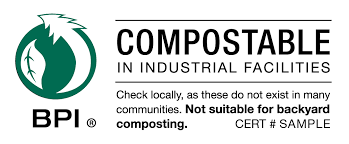
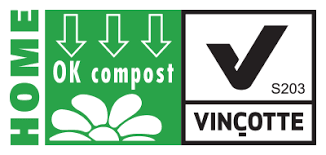
Look at these “compostable” marks. They mean very different things.
“Home Compost” means something can compost in your backyard. Without this mark that “compostable” probably needs an industrial facility.
The mark on left even says (in smaller print I’ll add) “In Industrial Facilities…Check locally, as these do not exist in many communities”.
2. “Recyclable Bioplastic means all recycling facilities can recycle it”
Again, no.
Recyclable bioplastic requires specialized recycling technology.
And, yup you guessed it: Most recycling centers do not have this recycling technology. (16, 17)
3. “Compostable bioplastics are recyclable”
Also false!
Putting compostable bioplastics in recycling can contaminate the recycling stream of petroleum-based plastics. That means compostable bioplastics can ruin entire batches of petroleum-based plastic recycling. (24, 25)
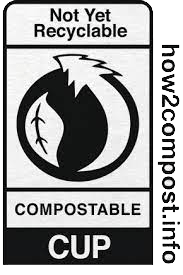
4. “Bioplastic is a greener, more sustainable choice.”
The world lacks the facilities, infrastructure, and regulations to process end-of-life bioplastics. There’s a risk we’ll just have a bioplastic problem on top of the existing plastic problem. (17, 19, 20, 23, 25)
But wait! There’s more bioplastics fine print:
- Bioplastics need similar amounts of energy as petroleum-plastic to produce.
- Bioplastics need water, land, pesticides, and herbicides for crop cultivation.
- Bioplastics in the ocean still harm marine life like petroleum-based plastic.
- Scientists haven’t determined the full environmental and social impacts of bioplastics.
(16, 17, 18, 19, 21, 23)
Bioplastic isn’t the miracle we’re all waiting for. But thanks to deceptive greenwashed marketing, consumers often think that bioplastic is. (22)
Moral of the story: I don’t buy bioplastic or industrial-compost stuff.
Because, despite the product claims, bioplastic isn’t realistically compostable or recyclable. I’d only be spending premium prices for a misleading “eco-friendly” product that’ll end up in a landfill or the ocean.
7. Silicone Isn’t All That Great Either
Greenwash alert: Silicone, like bioplastic & “compostable” is often marketed as “eco-friendly!” and “made from sand!”. But it’s not quite that simple.
How to make silicone:
- First, there’s Silica, or more accurately, silicon dioxide (SiO2) because it’s linked by oxygen (O). It’s found in beach sand, quartz, and most rocks.
- Silicon dioxide is heated with carbon (typically charcoal). This creates silicon (note: no “e”). Silicon is a semiconductor, perfect for electronics, circuits, and microchips.
- Silicon then reacts with fossil fuel-derived hydrocarbons, typically petroleum or natural gas. This creates Silicone (note: “e”), a flexible, heat-resistant, and plastic-like material.
(7, 8)
Silicone is complicated when it comes to eco-friendliness and sustainability.
There’s pros and cons. The big ones being:
- Although not petroleum-derived like some plastics, silicone production still requires some oil or natural gas. But less than plastic does. (139, 138)
- Silicone is not biodegradable. But it does not breakdown into micro plastics like many plastics do. Yet again, oil-like silicones, like those in hair products and silicone lube, can harm aquatic wildlife and microorganisms. Oil-like silicones are even detectable in the Arctic Ocean. Check out The Plant-Based Lube Guide for some silicone-free lube brands I like).
(9, 10, 11, 12, 13 )
Silicone pros and cons volley back and forth like a tennis match.
So, is silicone better than plastic? I’m not sure.
They key point is: Despite what marketers say, silicone isn’t perfect, and it’s not simply “made from sand”. If a silicone baggie reduces single-use plastic baggies, then I’m inclined to think that’s better.
But at the end of the day, I still prefer to store food in glass or beeswax cloth.
8. “Plastic-Free” Doesn’t Mean Ethically Manufactured
Just because something is wrapped in plastic-free packaging doesn’t mean it was ethically made.
Greenwash alert: Plastic-free packaging can be greenwashing misdirection.
Misdirection means a product highlights one “eco-friendly” feature to hide other not so green features. (31).
Plastic-free packaging or bioplastic can hide flaws like:
- Child and/or forced labor
- Hazardous working conditions
- Unchecked industrial waste and pollution
- Unsustainable supply chains
(32, 33, 34)
There’s many sex toys made from bioplastic or recycled aluminum that also tote plastic-free packaging.
These same sex toys are manufactured in countries known to abuse workers, children, and the environment (5).
Any “environmental good” from these sex toys is negated by the unregulated pollution their production probably caused. And it really makes me mad. So mad, that I made a whole separate Sex Toy Greenwashing Guide about it.
But before I go on a rant, let’s get back to the main point.
Most bioplastic (red flag number #1), plastic-free packaging, and recycled aluminum sex toys packaged plastic-free are not “eco-friendly” sex toys.
Why? Because those same toys are made in countries known for forced labor, working conditions, and devastating environmental pollution. (26, 27, 32, 33)
While plastic-free is good, it shouldn’t justify human or environmental abuse.
Bottom line: If you buy something plastic-free, check the country of origin and find out who made it.
And speaking of plastic…
9. Keep the Plastic You Already Have & Phase Out of Single-Use Plastics

Let’s shift gears from bioplastic to regular plastic.
Sustainable & ethical living doesn’t mean tossing all the plastic you currently have and replacing it with a non-plastic alternative.
Instead:
- Keep the plastics you already have. Don’t toss the plastic toilet brush to buy a bamboo one. It’s about buying less, not more, even if it’s the “right” stuff.
- Choose non-plastic materials if/when you need to replace the plastic product.
- Choose non-plastic materials for future purchases. Like plastic-free Elate Makeup.
- Along the lines of east swaps: Choose solid products, not liquid products for consumables. Like: Bar Soap, Laundry Powder, Tooth Tabs, Cleaning Solution, Shampoo/Conditioner.
- Why? When products contain liquids they need leak-proof packaging. This often means plastic packaging (and makes products heavier & bigger, which means larger transportation carbon footprints). Opting for solids increases the likelihood the product is wrapped in something other than plastic too.
- Avoid single-use plastics like plastic wrap, bags, floss, and straws.
While plastic often takes center stage in environmental conversation, it’s not the only, or even biggest, issue out there.
So much focus is on what we buy. Instead, a far more powerful (yet hardly talked about) issue is how we save.
It's not all about what we buy. How we save matters too.
I’m talking about banking and savings accounts.
Yep, very exciting.
10. Where You Bank Matters. Probably More Than Anything Else You Do.
What we buy matters. Single purchases can make a difference.
So, just think what your entire bank account can do.
Here’s how it works: we put money in a bank, and then the bank invests that money.
The big question is: where is your money invested?
It could be:
- Fossil fuels, oil & gas pipeline funding, tar sands, coal mining, fracking, drilling in the Arctic National Wildlife Refuge, and coal mining (banks invested $3.8+ trillion in the last 5 years!).
- Local communities, public works, and small business lending.
- Renewable energies, sustainability, environmental activism.
- Social justice programs & health care financing programs.
(44, 46, 47, 48, 49, 50)
There’s a few things in that list I’d much rather have my money supporting.
That’s where ethical banks and credit unions come in.
Ethical banking is rooted in Corporate Social Responsibility (CSR) and Socially Responsible Investments (SRI). That just means corporations (banks in this case), contribute to society by funding social and/or environmental projects or businesses. (44)
To fund these efforts, banks invest money. That money comes from bank accounts that folks like you and I have. When our money goes to those social projects we’re investing in them. Hence, Socially Responsible Investments. (43, 44)
Ethical banking is becoming more popular (43). And as with anything that becomes popular, corporations will try to exploit it through greenwashing.
Greenwash alert: Is your bank is highlighting LEED light bulbs in branch locations and paperless billing? That’s nice and all, but it’s probably a misdirection tactic. Look at our light bulbs! (And don’t look at the oil pipeline we just funded and want build on Indigenous-owned land!).
Verify what your bank actually invests in, not just what they advertise. Because chances are, your bank is on this List of Dirty Banks. (49, 50)
So, with all that said, when it comes to banks, look for third-party certification marks like these:

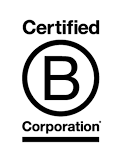
These marks verify a bank invests in the Earth and its people.
There’s so many options for values-aligned banking, the hard part is picking one!
I’ve used these resources to find better banking options, check ‘em out:
- The Certified B-Corp Bank Directory
- The Global Alliance for Banking of Values Interactive Map
- This Bank Search Engine
- This search engine is really awesome! There are search options like: Asian, Black, Indigenous, Latinx, and woman-owned banks. And filters like: “doesn’t fund fossil fuels”, “invests in farms, low-income communities, small business lending, or public works”. It’s a really great tool, be sure to verify directly with the bank you choose to ensure accuracy.
- This Credit Union Search Engine
- This search engine has many of the same options listed in the Bank Search Engine just for credit unions. Equally awesome.
- This Banking & Finance Call to Action Resource.
*Just a reminder: I’m not a finance professional, so talk to yours if you have any banking questions.
Speaking of ethical banking, credit unions, and local communities, let’s talk about local businesses.
11. Avoid Amazon®
One of the biggest threats to our local & global communities is Amazon®.
That’s why I don’t personally shop there. And How i Healthy never links to products on Amazon®.
I’m not an affiliate with them.
Sure, I’d make money if I did, but I refuse to sign on. It’s completely against everything I & How i Healthy stands for.
Why?
Because Amazon®:
- Allegedly has systemic discrimination against women and workers of color, resulting in lawsuits.
- Allows & promotes medical misinformation, pseudoscience, anti-LGBT, and anti-sematic materials. These are sometimes removed after backlash, sometimes not.
- Employee injury rates are twice the as high as the average for similar work in None-Amazon® warehouses.
- Has a huge carbon footprint and wastes about 90% of their plastic usage.
- Is “the worst offender for tax avoidance”. China, Germany, Poland, South Korea, France, Japan, Ireland, Singapore, Luxembourg, Italy, Spain, United Kingdom, United States, and Portugal have all investigated Amazon® for tax avoidance.
- Is a huge contributor to plastic pollution in our communities, environment, and the oceans.
- Is rampant with counterfeits & knockoff products. Many of which contain harmful things like lead paint. Some even were found to have rat droppings. (It’s so bad I made a whole Guide to Avoiding Counterfeits when shopping online)
- Imposes large fees to small businesses that do sell on their platform, taking 30% of the sale profits from the seller. All while allowing counterfeit products to undercut small business sales further.
- Leverages anti-competitive practices, several that have resulted in antitrust lawsuits.
- Many reviews on Amazon® are fake/manufactured.
- Opposes efforts for worker unionization.
- Partners with big oil companies to find, drill, & extract oil.
- Potentially benefits from forced Uighur labor in China, according to the Australian Strategic Policy Institute.
- Produces copycats of sustainable products but without the sustainability.
- Provides jobs across the worker skill spectrum, many even locally, but those workers are subjected to poor treatment, low wages, & unsafe worker conditions.
- Takes profits away from local business and contributes to the decline of small businesses across the country.
(51, 52, 53, 54, 55, 56, 57, 58, 59, 60, 61, 62, 63, 64, 65, 66, 67, 68, 69, 70, 71, 72, 73, 74)
Fear not! A life without Amazon® is possible!
Thanks to ethical online marketplaces and local shops in our communities!
Which leads me to the next tip. Shopping local.
12. Shop Local, Even with Online Shopping
Maybe you’ve heard it before. Over and over.
As unoriginal as it sounds…shop local if/when you can. Seriously.
Shopping local often means less transportation emissions. Less emissions means lower carbon footprints and green house gases. In the US alone, transportation emissions account for 29% of total greenhouse gas emissions. (35, 39)
The environmental benefits of sustainable products can be completely erased if it’s shipped from the other side of world. Often, the most locally produced option is the greenest option. (39)
Plus, shopping local supports your local community, local jobs, and local businesses. Better than online marketplace shopping.
- Shopping local means ~ 2/3 of every dollar spent stays in your community.
- Shopping local has ~7x more positive impact on you community than online shopping.
(1, 2, 3)
The best part about local shopping?
You can do it online!
Ethical online marketplaces are just as convenient, and they are so much better for people & planet.
An ethical shop does the work vetting sustainable & ethical products. So, you don’t have to. Shop with confidence and get on with your day.
Here’s a few local shopping resources:
- Bookshop.org is a convenient online marketplace connects you to local bookshops. You can also find a Black-Owned bookshop near you too!
- Check out Local Harvest to find farmers markets, community supported agriculture, and family farms near you!
- EarthHero®, my favorite USA-based ethical online marketplace. See my EarthHero® Review for more.
- Here’s a fantastic list of Indigenous-Owned and Black-Owned bookstores at Libro.fm you can shop audiobooks from. Audiobooks are awesome. They’re paper-free and there’s no carbon emissions from shipping!
- Mt. Rose Herbs® sources sustainably harvest spices, herbs, tea, and more. Both locally and globally. I love them so much, I made a Rose Mt. Herbs® Review too!
- My Favorite Sustainable & Ethical Brands
- My Favorite Sustainable & Ethical Sex Shops & Manufactures, it’s organized by country.
- This list of Sustainable & Ethical Marketplaces Around the World. Wherever you live, there’s probably an ethical online store stocked with your favorite sustainable products.
- Vermont-based Myti is an eCommerce marketplace with local Vermont businesses so Vermonters can keep ~$535 million dollars in their state. Instead of giving it to eCommerce giants.
13. Avoid Products Made Overseas
Ready for the next level of local shopping?
Buy stuff made in your home country too. Not just a globally-made product sold at a local store.
Can’t get it made by your home country? Then opt for products from countries with values you endorse.
I buy things made in Australia, Canada, the EU, the UK, the USA, and a few other counties with meaningful worker & environmental protections.
That said, most things I buy are still USA or Canada-made because that’s where I’m located.
Shipping something from the UK, EU, or Australia to where I live has a tremendous carbon footprint.
I very rarely shop overseas these days, and I’m working towards stopping altogether.
14. Don’t Buy Water, Air, or Earth
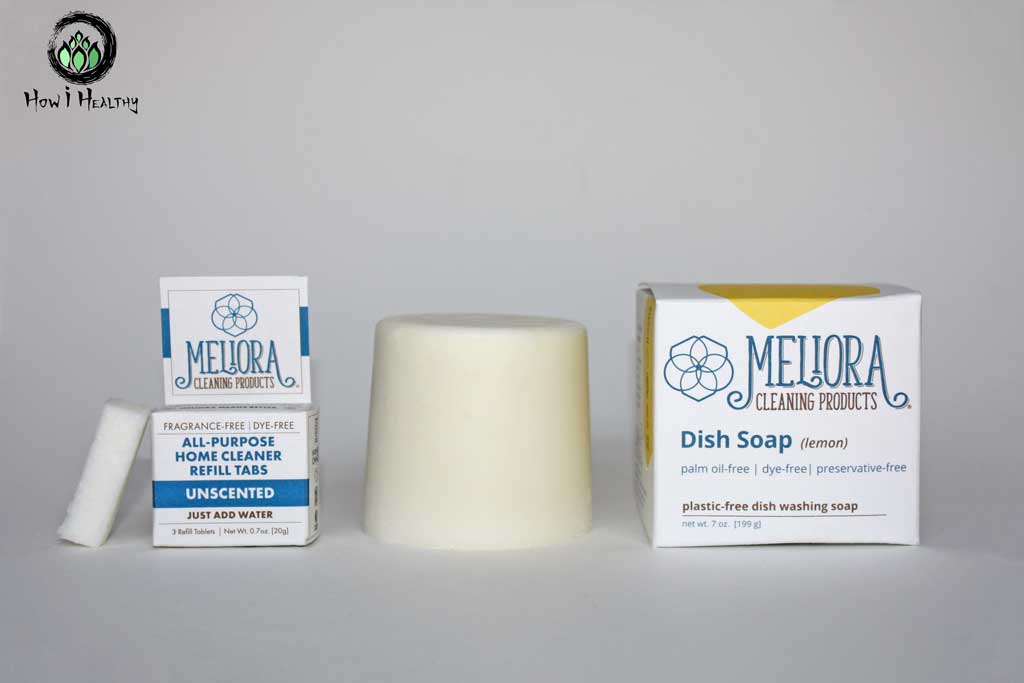
No, I don’t mean your water or AC bill, (pay your bills). And I don’t mean go off-grid with a water collection system and compost toilet (or do, if that’s your jam).
I mean water-based products. And really most liquid-based products.
Not only are water-based products more likely to packaged in plastic, but they are also heavier and bigger because of the water. That means fewer products can ship out per load. That means more trucks/planes/boats transporting it. Which means more carbon/ greenhouse gas (GHG) emissions.
Take laundry detergent for example. Liquid detergent is much bigger and heavier than a box of laundry detergent powder. More boxes of laundry powder can fit on a truck than huge liquid detergent bottles can.
I like Meliora® Laundry Powder by the way. Water-free, plastic-free, and polyvinyl alcohol-free. Meliora® Bleach-Free Oxygen Brightener is excellent for heavy duty loads.
Remember, in the US alone, transportation emissions account for 29% of total greenhouse gas emissions (35). Lightening up products by eliminating water can pack more products per load, use less packaging, and might reduce carbon emissions too.
And maybe it’s just me, but environmental issues aside, I hate paying for products with water in them. I already have water at home! I can add my own, thank you.
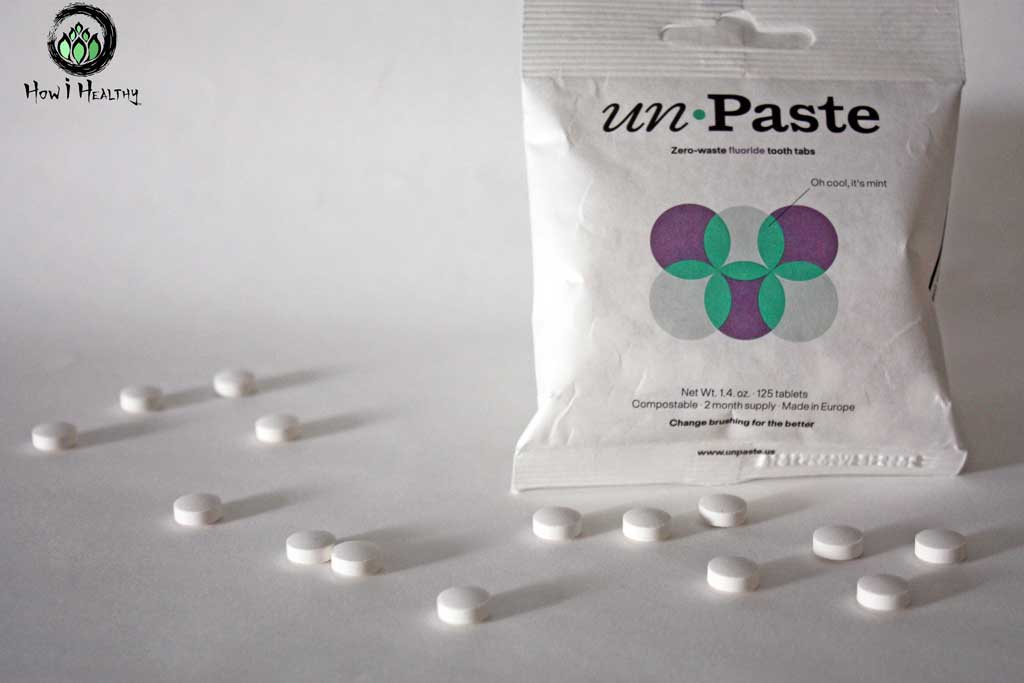
I’d much rather go for these water-free Unpaste Toothpaste Tablets than heavy, plastic-packaged tooth paste too.
Or even a water-filled toothpaste packaged in a recyclable aluminum tube.
Check out these guides for more water-free product swaps!
Next is air.
I won’t pay for air either. I’m taking about the dryer in the laundry room.
Line drying dries clothing at a fraction of the carbon footprint that an electric or gas dryer does (39). And, aside from buying some rope, it costs me nothing to do, heck I save money doing it.
And lastly, I don’t pay for earth. By “earth”, I mean garbage bags. Yep. I don’t buy them. Not one.
Why? Because, even though I take many measures to avoid plastic, incidental plastic bags creep into my life.
Sometimes it’s the plastic bag a friend gave me when they shared their vegetable harvest. Sometimes it’s the plastic packaging that sneaked past my guard. Sometimes it’s those plastic mailer envelopes from a package someone sent me. And sometimes it’s the plastic bag my food came packaged in. (It happens, I’m not perfect).
There are enough plastic bags that find me, even when I’m actively avoiding them! All these bags become trash bags.
Sure, some are very small trash bags. But when I compost food waste, avoid single-use plastics, and use cloth napkins instead of paper towels, I find I don’t need much of a garbage bag at all. Let alone a big one.
But in the end, I’m still throwing out plastic bags.
Sure, that plastic bag got a few uses before going to the landfill, but does that really matter? Well, I’m not sure. Which brings me to my next point:
Environmental science and “eco-friendly” practices are often more complicated than I first assume. And even after researching stuff, I still don’t have a clear answer.
15. Green Living is Complicated: Keep Learning & Adapting
“Greener choices” are complicated and constantly changing.
Bioplastic, for instance: Once thought (and still claimed to be) the solution to our plastic woes, is now just another landfiller.
A plastic bag, contrary to popular belief, has a small carbon footprint. But plastic is bad for other reasons. (39)
But plastic-free stuff isn’t necessarily perfect either. Glass requires lots of energy to produce and recycle, and its weight adds to the transportation carbon footprint. Paper production is also energy intensive. (39)
From a strictly carbon footprint perspective, plastic bags have the lowest emissions compared to glass & paper. But plastic doesn’t biodegrade and causes microplastic shedding, so is paper better? But rotting paper in landfills produce methane greenhouse gas. So, is paper still better than plastic? (39)
The conundrums and volley of questions, pros, and cons are endless.
Another example: Diet and carbon emissions.
Some studies say our diets have far more impact on carbon footprint than almost anything else we do (aside from transportation). Some studies say eat less meat & dairy to lower carbon footprints (since livestock produce methane). Other studies say organic farming (including meat & dairy livestock) lowers carbon footprints. Another study says that even organic beef from a local farm has a high carbon footprint. Some studies say goat and pig products are fine, but cow isn’t. (36, 37, 38, 39, 40)
And other folks say that our individual efforts to reduce carbon, like commuting by bike or using a hand dryer over paper towels, don’t matter. Because all those measures are canceled out with a single flight across the country. As long we add airplane carbon emissions, nothing else we do matters. (39)
The point is: Greener living is complicated.
Every choice impacts.
Even "greener" choices.
There’s no easy solution. Most attempts to make greener choices will still have environmental or social repercussions up & down supply chains. And sometimes something that was a greener choice initially ends up not being green down the road.
So, I keep learning, reading, and adapting.
And when a product is marketed to me as the “The solution to ALL THE PROBLEMS!”
I’m skeptical.
If I’ve learned anything from my research for these articles or my life, it’s that I don’t know anything at all. I’m not an environmental scientist. I’m not an expert in anything.
I’m just a consumer trying to make better sustainable & ethical choices. And I’m still figuring out what that even means.
Check out my Bookshelf for books about environmentalism, climate justice, and environmental racism.
Another fantastic resource? The nonprofit Regeneration Organization. The online Regeneration Action Nexus. This is one of the most accessible and comprehensive climate action resources I’ve found. Browse climate challenges & find solutions for all levels of agency, from individuals to CEOs. Each climate issue also has “Bad Actors” perpetuating the problem and “Key Players” fighting for progress.
The How i Healthy Standard
These resources helped me establish my own standards.
The How i Healthy Standard: healthy body & healthy planet.

The How i Healthy Standard
Our favorite products/brands meet as many of these conditions as possible.
Healthy body, healthy planet, & healthy sex means:
- Align with My Best Sustainability & Ethical Tips
- As Local as Possible
- Cruelty-Free
- Doesn’t Contain these Harmful Chemicals
- Environmental and/or Socially Responsible Company
- Ethically Made: Fair Trade, Living Wages, Safe Worker Conditions
- Gender-inclusive
- No Greenwashing Scams
- Organic & Sustainably Harvested Ingredients
- Pass How i Healthy’s Counterfeit Vetting Process
- Purchased Through/From an Ethical Shop/Marketplace.
- Zero Waste / Plastic & Bioplastic-free / Home Compostable
- 1% for the Planet®, B Corporation®, Green American Business®, or similar credentials
With this standard guiding me, I buy sustainable & ethical products through sustainable & ethical shops.
Favorite Shops & Brands
Here’s a few guides with all the favorites:
With all this talk about shopping and buying stuff, here’s one last thought to bookend how this conversation even started.
Sustainable living tip #1.
Buy Less, Not More
For me, conversations about sustainable & ethical living follow this outline:
- Buy less.
- Find better ways to shop when I do buy stuff.
- Circle back to the main point: It’s about buying less, not more.
I don’t want to perpetuate consumerism. Even while connecting folk to sustainable/ethical companies and products.
I believe in buying less stuff, not just buying “the right stuff”.
Beyond that, even if I wasn’t concerned about consumerism or the environment, having stuff makes me anxious. I’m a minimalist. Even as I child I didn’t like having stuff. I cleaned my room and donated toys for fun.
Side Note: What to know what makes me really anxious? Clothing. Clothing often means options. And I don’t like having too many options either. Options make me anxious. Since childhood I’ve rocked only a few outfits and few pairs of shoes.
My point is: Minimalism, for both environmental and personal reasons, is one of my values. It’s a value that sometimes feels threatened while writing about products on How i Healthy.
I hold myself accountable a few ways:
- What products I let into my 600 sqft space is calculated, useful, and purchased myself. I don’t accept products in exchange for reviews. I’m a minimalist, I don’t like having stuff, even if it’s free. If I didn’t personally dish out the money for something, I can’t expect you to either.
- I don’t “look for products” to write about either. I write about what I already have. My T-shirt “paper towels”, leftover lemonade water bottle, Mason jar coffee mug, and my Apple Cider Spray Bottle are all opportunities for an “eco-friendly” product promotion (seriously, there are so many water bottles & coffee mugs out there!). But I don’t want to buy more things just to review. My repurposed stuff is fine. It’s what I use, so that’s what I share. And I don’t make a cent for doing it.
- I add learning elements to every article I write. The products I share are presented with data, science, etymology, and history nuggets. I do this to move beyond simple product reviews, I want to add knowledge & context.
- The end goal isn’t to convince folks to buy the product I like; it’s to have conversations about why I chose an alternative in the first place. Why am I even writing about this product? It’s often because the conventional fallback isn’t great for the Earth or its people.
- I do this work because I want to, not for money. Sure, I might make a modest commission from an affiliate link if folks do buy the product I write about, but if I was in this business for the money, I would have left long ago. I’m very privileged; I have other streams of income that support me so I can write as I do.
- I never use AI to generate content, articles, photos, or anything else on How i Healthy. This site is 100% human made. That means it takes time to create content. And I won’t spend a minuet working on something I don’t believe in. I do this work because I want to, and that means I put in the work. Otherwise, what’s the point?
- How i Healthy exists, not for profit, but because greenwashing bugs the heck out me. Folks think they are doing better for the world, but it’s often just their money fueling the dumpster fire of consumerism. I was one of them, and heck, I might still be for all I know.
- How i Healthy is knowledge-first. With the information to sift through greenwashing claims & pseudoscience, we consumers can make the sustainable/ethical purchases we intend to. Not the greenwashed phony.
But even with these measures, I sometimes feel conflicted.
The line between impassioned information sharing, product reviews, and consumerism is a very thin one.
And, diverting sales online through affiliate links draws sales away from locally owned businesses in your community. And that isn’t something I want to do either.
So, at the risk of losing a commission from a sale, I ask:
Do you really need it? And can you buy it locally?
That’s How i Healthy!
-Artemis
- Hebert, Bridgett. “Support Your Local Community by Shopping Small.” S. Chamber of Commerce, 27 Nov. 2018, https://www.uschamber.com/small-business/everything-you-need-to-know-about-small-business-saturday
- American Booksellers Association &Civic Economics, 2019, Prime Numbers, http://nebula.wsimg.com/4f6bb2c546c33ca88b1084a9a04d4541?AccessKeyId=8E410A17553441C49302&disposition=0&alloworigin=1
- Independent We Stand, The North American Retail Hardware Association, The Paint and Decorating Retailers Association, Civic Economics, 2018, Home Sweet Home. Locals Vs Amazon, independentwestand.org/wp-content/uploads/Home-Sweet-Home-Amazon_.pdf
- Mie, Axel et al. “Human health implications of organic food and organic agriculture: a comprehensive review.” Environmental health : a global access science source 16,1 111. 27 Oct. 2017, doi:10.1186/s12940-017-0315-4. https://ehjournal.biomedcentral.com/articles/10.1186/s12940-017-0315-4
- Vigar, Vanessa et al. “A Systematic Review of Organic Versus Conventional Food Consumption: Is There a Measurable Benefit on Human Health?.” Nutrients 12,1 7. 18 Dec. 2019, doi:10.3390/nu12010007. https://pubmed.ncbi.nlm.nih.gov/31861431/
- “Organic Farming ACH17-21/October 2020 Highlights Results from the 2019 Organic Survey.” USDA NASS, 2019 Organic Survey (2017 Census of Agriculture), United States Department of Agriculture National Agricultural Statistics Service, 2020, nass.usda.gov/Publications/Highlights/2020/census-organics.pdf
- Institute of Medicine (US) Committee on the Safety of Silicone Breast Implants; Bondurant S, Ernster V, Herdman R, editors. Safety of Silicone Breast Implants. Washington (DC): National Academies Press (US); 1999. 2, Silicone Chemistry.Available from: https://www.ncbi.nlm.nih.gov/books/NBK44788/
- Castro, Joseph. “Silicon or Silicone: What’s the Difference?” LiveScience, Purch, 20 June 2013, livescience.com/37598-silicon-or-silicone-chips-implants.html
- “EWG Skin Deep®: What Is DIMETHICONE.” EWG, ewg.org/skindeep/ingredients/702011-DIMETHICONE/
- “EWG Skin Deep®: What Is CYCLOMETHICONE.” EWG, ewg.org/skindeep/ingredients/701738-CYCLOMETHICONE/
- Johnson, Wilbur Jr et al. “Safety Assessment of Dimethiconol and Its Esters and Reaction Products as Used in Cosmetics.” International journal of toxicology 36,3_suppl (2017): 31S-50S. doi:10.1177/1091581817739429. https://pubmed.ncbi.nlm.nih.gov/29243542/
- Watanabe, N et al. “Distribution of silicones in water, sediment and fish in Japanese rivers.” The Science of the total environment 73,1-2 (1988): 1-9. doi:10.1016/0048-9697(88)90180-5. https://www.sciencedirect.com/science/article/abs/pii/0048969788901805?via%3Dihub
- Helling, Ruediger, et al. “Determination of the Overall Migration from Silicone Baking Moulds into Simulants and Food Using 1H-NMR Techniques.” Food Additives & Contaminants: Part A, vol. 26, no. 3, 2009, pp. 395-407, doi:10.1080/02652030802520852. https://pubmed.ncbi.nlm.nih.gov/19680914/
- Fromme, Hermann et al. “Siloxane in baking moulds, emission to indoor air and migration to food during baking with an electric oven.” Environment international 126 (2019): 145-152. doi:10.1016/j.envint.2019.01.081. https://pubmed.ncbi.nlm.nih.gov/30798195/
- “Frequently Asked Questions about Plastic Recycling and Composting.” EPA, Environmental Protection Agency, epa.gov/trash-free-waters/frequently-asked-questions-about-plastic-recycling-and-composting
- Narancic, Tanja et al. “Recent Advances in Bioplastics: Application and Biodegradation.” Polymers 12,4 920. 15 Apr. 2020, doi:10.3390/polym12040920. https://pubmed.ncbi.nlm.nih.gov/32326661/
- Di Bartolo, Alberto et al. “A Review of Bioplastics and Their Adoption in the Circular Economy.” Polymers 13,8 1229. 10 Apr. 2021, doi:10.3390/polym13081229. https://pubmed.ncbi.nlm.nih.gov/33920269/
- “Bioplastics: Don’t Let the Label Fool You.” Canadian Geographic, 5 Aug. 2020, www.canadiangeographic.ca/article/bioplastics-dont-let-label-fool-you
- Rujnić-Sokele, Maja, and Ana Pilipović. “Challenges and opportunities of biodegradable plastics: A mini review.” Waste management & research : the journal of the International Solid Wastes and Public Cleansing Association, ISWA 35,2 (2017): 132-140. doi:10.1177/0734242X16683272. https://pubmed.ncbi.nlm.nih.gov/28064843/
- “Plastics Challenge: Improved Compostability of Bioplastics.” Innovative Solutions Canada, Agriculture and Agri-Food Canada (AAFC) and Natural Resources Canada (NRCan), Innovation, Science and Economic Development Canada, 2018, https://ised-isde.canada.ca/site/innovative-solutions-canada/en/plastics-challenge-improved-compostability-bioplastics
- MICHAELANGELO, Tabone, and James Cregg. “Sustainability Metrics: Life Cycle Assessment and Green Design in Polymers.” Environmental Science & Technology, U.S. National Library of Medicine, https://pubmed.ncbi.nlm.nih.gov/20866068/
- “Biodegradable and Compostable Plastics – Challenges and Opportunities.” European Environment Agency, eea.europa.eu/publications/biodegradable-and-compostable-plastics/biodegradable-and-compostable-plastics-challenges
- Oakes, Kelly. “Why Biodegradables Won’t Solve the Plastic Crisis.” BBC Future ENVIRONMENT, BBC, 5 Nov. 2019, bbc.com/future/article/20191030-why-biodegradables-wont-solve-the-plastic-crisis
- “Frequently Asked Questions about Plastic Recycling and Composting.” EPA, Environmental Protection Agency, epa.gov/trash-free-waters/frequently-asked-questions-about-plastic-recycling-and-composting
- Sustainable Packaging Coalition. (2021, January). Understanding the Role of Compostable Packaging in North America [PDF]. Retrieved from https://sustainablepackaging.org/resources/.“U.S. DEPARTMENT OF AGRICULTURE Certification Programs.“ USDA National Agricultural Library, 2020, nal.usda.gov/awic/certification-programs
- Ciriminna, R., & Pagliaro, M. (2019). Biodegradable and Compostable Plastics: A Critical Perspective on the Dawn of their Global Adoption. ChemistryOpen, 9(1), 8–13. https://chemistry-europe.onlinelibrary.wiley.com/doi/10.1002/open.201900272. https://chemistry-europe.onlinelibrary.wiley.com/doi/10.1002/open.201900272
- Robb, Simon. “This Is How Sex Toys Are Made – You Might Be Surprised.” Metro, Metro.co.uk, 30 May 2016, https://metro.co.uk/2016/05/30/this-is-how-sex-toys-are-made-you-might-be-surprised-5912804/
- “Combating Trafficking in Counterfeit and Pirated Goods .” Office of Strategy, Policy & Plans, U.S. Department of Homeland Security, 24 Jan. 2020, dhs.gov/sites/default/files/publications/20_0124_plcy_counterfeit-pirated-goods-report_01.pdf
- Levy, Ari. “Birkenstock Quits Amazon in US after Counterfeit Surge.” CNBC, CNBC, 20 July 2016, cnbc.com/2016/07/20/birkenstock-quits-amazon-in-us-after-counterfeit-surge.html?mod=djemlogistics
- Stroppa, Andrea, et al. “Instagram and Counterfeiting in 2019: New Features, Old Problems .” Ghost Data, Rome, NY, 9 Apr. 2019, https://ghostdata.io/report/Instagram_Counterfeiting_GD.pdf
- de Freitas Netto, S.V., Sobral, M.F.F., Ribeiro, A.R.B. et al.Concepts and forms of greenwashing: a systematic review. Environ Sci Eur32, 19 (2020). https://enveurope.springeropen.com/articles/10.1186/s12302-020-0300-3. https://enveurope.springeropen.com/articles/10.1186/s12302-020-0300-3
- Ciriminna, R., & Pagliaro, M. (2019). Biodegradable and Compostable Plastics: A Critical Perspective on the Dawn of their Global Adoption. ChemistryOpen, 9(1), 8–13. https://chemistry-europe.onlinelibrary.wiley.com/doi/10.1002/open.201900272. https://chemistry-europe.onlinelibrary.wiley.com/doi/10.1002/open.201900272
- Robb, Simon. “This Is How Sex Toys Are Made – You Might Be Surprised.” Metro, Metro.co.uk, 30 May 2016, metro.co.uk/2016/05/30/this-is-how-sex-toys-are-made-you-might-be-surprised-5912804/.
- “Womanizer Premium Eco.” Manual , Womanizer, www.womanizer.com/media/premiumeco-how-to/06-04-21_Womanizer_Premium_eco_Manual_English.pdf?sscid=91k5_c797d&utm_source=ShareASale&utm_medium=aff&utm_campaign=1052789_855596.
- “Carbon Pollution from Transportation.” EPA, Environmental Protection Agency, https://www.epa.gov/transportation-air-pollution-and-climate-change/carbon-pollution-transportation
- Rose, Donald et al. “Carbon footprint of self-selected US diets: nutritional, demographic, and behavioral correlates.” The American journal of clinical nutrition 109,3 (2019): 526-534. doi:10.1093/ajcn/nqy327. https://pubmed.ncbi.nlm.nih.gov/30698631/
- Horrillo, Andrés et al. “Organic Farming as a Strategy to Reduce Carbon Footprint in Dehesa Agroecosystems: A Case Study Comparing Different Livestock Products.” Animals : an open access journal from MDPI 10,1 162. 17 Jan. 2020, doi:10.3390/ani10010162. https://pubmed.ncbi.nlm.nih.gov/31963570/
- Vitali, Andrea et al. “Carbon footprint of organic beef meat from farm to fork: a case study of short supply chain.” Journal of the science of food and agriculture 98,14 (2018): 5518-5524. doi:10.1002/jsfa.9098. https://pubmed.ncbi.nlm.nih.gov/29691877/
- Berners-Lee, Mike. How Bad Are Bananas?: The Carbon Footprint of Everything. Profile Books, 2010.
- HYMAN, Dr. MARK. Food Fix: How to Save Our Health, Our Economy, Our Communities, and Our Planet–One Bite at a Time. LITTLE BROWN SPARK, 2022.
- “Greenwashing.” Merriam-Webster, Merriam-Webster, 2020, merriam-webster.com/dictionary/greenwashing
- de Freitas Netto, S.V., Sobral, M.F.F., Ribeiro, A.R.B. et al.Concepts and forms of greenwashing: a systematic review. Environ Sci Eur32, 19 (2020). https://enveurope.springeropen.com/articles/10.1186/s12302-020-0300-3. https://enveurope.springeropen.com/articles/10.1186/s12302-020-0300-3
- Callejas-Albiñana, Fernando E., et al. “Assessing the Growth of Ethical Banking: Some Evidence from Spanish Customers.” Frontiers in Psychology, vol. 8, 2017, https://doi.org/10.3389/fpsyg.2017.00782. https://www.frontiersin.org/articles/10.3389/fpsyg.2017.00782/full
- Valls Martínez, María del, et al. “Sustainable and Conventional Banking in Europe.” PLOS ONE, vol. 15, no. 2, 2020, https://doi.org/10.1371/journal.pone.0229420. https://journals.plos.org/plosone/article?id=10.1371/journal.pone.0229420
- De la Cuesta-González, Marta, et al. “Coalitions and Public Action in the Reshaping of Corporate Responsibility: The Case of the Retail Banking Industry.” Journal of Business Ethics, vol. 173, no. 3, 2020, pp. 539–558., https://link.springer.com/article/10.1007/s10551-020-04529-x. https://link.springer.com/article/10.1007/s10551-020-04529-x
- Salvador-Carulla, Luis et al. “The role of ethical banks in health care policy and financing in Spain.” Journal of health care finance 36,2 (2009): 83-9.
- “Principles.” Global Alliance For Banking on Values, https://www.gabv.org/about-us/
- Vetter, David. “Climate Chaos: Ngos Name Top Banks Who Put $3.8 Trillion into Fossil Fuels.” Forbes, Forbes Magazine, 25 Mar. 2021, https://www.forbes.com/sites/davidrvetter/2021/03/24/climate-chaos-ngos-name-top-banks-who-put-38-trillion-into-fossil-fuels/
- “Many Banks Committing to Climate Goals Are Engaging in Greenwashing.” Sierra Club, 10 May 2021, https://www.sierraclub.org/sierra/many-banks-committing-climate-goals-are-engaging-greenwashing-banking-on-climate-chaos
- “Banking on Climate Change 2021.” Fossil Fuel Finance Report 2021. https://www.bankingonclimatechaos.org/wp-content/uploads/2021/10/Banking-on-Climate-Chaos-2021.pdf
- “Oceana.” DOI: 10.5281/Zenodo.4341751, Amazon®’s Plastic Problem Revealed. , 15 Dec. 2020, https://oceana.org/wp-content/uploads/sites/18/Amazon®s_plastic_problem_report_12.17.2020_doi.pdf
- “Primed for Pain: Amazon®’s Epidemic of Workplace Injuries.” Strategic Organizing Center, 2 June 2021, https://thesoc.org/Amazon®-primed-for-pain/
- Pisani, Joseph. “Amazon®’s Growing Ties to Oil Industry Irks Some Employees.” AP NEWS, Associated Press, 10 Apr. 2019, https://apnews.com/article/96ceb0345d6044758ba36a61e1ffe84d
- PRESS, Terry Pierson/Orange County Register/ZUMA. “How Amazon® Wins: By Steamrolling Rivals and Partners.” The Wall Street Journal, Dow Jones & Company, 23 Dec. 2020, https://www.wsj.com/articles/Amazon®-competition-shopify-wayfair-allbirds-antitrust-11608235127?mod=djemalertNEWS.
- Harmon, Amy. Amazon® Glitch Unmasks War of Reviewers. The New York Times, 14 Feb. 2004, https://www.nytimes.com/2004/02/14/us/Amazon®-glitch-unmasks-war-of-reviewers.html?scp=6&sq=Amazon®%2Bbook%2Breviews&st=nyt
- “How Fake Customer Reviews Do – and Don’t – Work.” Harvard Business Review, 24 Nov. 2020, https://hbr.org/2020/11/how-fake-customer-reviews-do-and-dont-work
- “Amazon®’s Tax Gap Grows to More than $6 Billion as Progressive Investors Push for Transparency.” Fair Tax Foundation, 23 May 2022, https://fairtaxmark.net/Amazon®-tax-gap-grows-to-more-than-6-billion-as-progressive-investors-push-for-transparency-at-their-agm/
- XU, Vicky, et al. “Uyghurs for Sale | Australian Strategic Policy Institute | ASPI.” ‘Re-Education’, Forced Labour and Surveillance beyond Xinjiang., Australian Strategic Policy InstituteDownload 9.11 MB, 1 Mar. 2020, https://www.aspi.org.au/report/uyghurs-sale
- “Employee Sues Amazon® for Alleged Race Discrimination.” Case 1:22-Cv-03707-JPB-LTW, 19 Sept. 2022, https://www.law.com/dailyreportonline/2022/09/19/employee-sues-Amazon®-for-alleged-race-discrimination/?slreturn=20230207105539.
- Sherman, Natalie. “Amazon® Workers Win Battle to Form First Us Union.” BBC News, 2 Apr. 2022, https://www.bbc.com/news/business-60944677
- Weise, Karen. “Amazon® Illegally Fired Activist Workers, Labor Board Finds.” The New York Times, 5 Apr. 2021, https://www.nytimes.com/2021/04/05/technology/Amazon®-nlrb-activist-workers.html.
- Mattioli, Dana, and Christine Mai-Duc. “California Sues Amazon®, Alleging Antitrust Violations Inflated Prices and Stifled Competition.” The Wall Street Journal, Dow Jones & Company, 15 Sept. 2022, https://www.wsj.com/articles/california-sues-Amazon®-for-alleged-antitrust-violations-that-inflated-prices-stifled-competition-11663178985
- Association, American Apparel & Footwear. “AAFA Calls Out Amazon® in Notorious Markets Submission; Encourages USTR to Expand Report to Include Domestic Markets.” AAFA Calls Out Amazon® in Notorious Markets Submission and Encourages USTR to Expand Report, 2019, https://www.aafaglobal.org//AAFA/AAFA_News/2019_Press_Releases/AAFA_Notorious_Markets_Submission_2019.aspx?WebsiteKey=49c45f4d-69b3-4c66-823a-6d285960fed2
- “Combating Trafficking in Counterfeit and Pirated Goods .” Office of Strategy, Policy & Plans, U.S. Department of Homeland Security, 24 Jan. 2020, dhs.gov/sites/default/files/publications/20_0124_plcy_counterfeit-pirated-goods-report_01.pdf
- OECD/EUIPO (2016), Trade in Counterfeit and Pirated Goods: Mapping the Economic Impact, Illicit Trade, OECD Publishing, Paris, https://www.oecd-ilibrary.org/governance/trade-in-counterfeit-and-pirated-goods_9789264252653-en. https://www.oecd-ilibrary.org/governance/trade-in-counterfeit-and-pirated-goods_9789264252653-en
- “Fakes.” Magic Wand, 8 Apr. 2019, magicwandoriginal.com/fakes/.
- Levy, Ari. “Birkenstock Quits Amazon® in US after Counterfeit Surge.” CNBC, CNBC, 20 July 2016, cnbc.com/2016/07/20/birkenstock-quits-Amazon®®-in-us-after-counterfeit-surge.html?mod=djemlogistics
- AC No: 120-87C. “Advisory Circular.” Use of Child Restraint Systems on Aircraft, U.S. Department of Transportation Federal Aviation Administration, 24 Sept. 2015, https://www.faa.gov/documentLibrary/media/Advisory_Circular/AC_120-87C.pdf
- Suthivarakom, Granda. “I Bought These Things From Amazon® Prime. Can You Tell Which Ones Are Real?” Wirecutter, The New York Times, 20 Feb. 2020, nytimes.com/wirecutter/blog/i-bought-these-things-from-Amazon®®-prime-can-you-tell-which-ones-are-real/
- Hoffower, Hillary. “Fake Products Sold by Places like Walmart or Amazon® Hold Risks of Everything from Cyanide to Rat Droppings – Here’s How to Make Sure What You’re Buying Is Real.” Business Insider, Business Insider, 29 Mar. 2018, businessinsider.com/how-to-find-fake-products-online-shopping-Amazon®®-ebay-walmart-2018-3
- Shepard, Wade. “How To Avoid Dangerous Counterfeits On Amazon® This Holiday Season.” Forbes, Forbes Magazine, 21 Dec. 2017, forbes.com/sites/wadeshepard/2017/12/13/how-to-protect-your-family-from-dangerous-fakes-on-Amazon®®-this-holiday-season/
- Murphy, Laura. “How to Avoid Buying Counterfeit Products Online.” Consumer Reports, 7 Dec. 2018, consumerreports.org/online-shopping/how-to-avoid-buying-counterfeit-products-online/
- “The Maca Team.” The Maca Team on Amazon® – Why We No Longer Sell On Amazon®, www.themacateam.com/the-maca-team-no-longer-sells-on-Amazon®.
Mitchell, Stacy, and Ron Knox. “Issue Brief: How Amazon Exploits and Undermines Small Businesses, and Why Breaking It up Would Revive American Entrepreneurship.” Institute for Local Self-Reliance, 202AD, ilsr.org/fact-sheet-how-breaking-up-amazon-can-empower-small-business/.
- Rolsky, Charles, and Varun Kelkar. “Degradation of Polyvinyl Alcohol in US Wastewater Treatment Plants and Subsequent Nationwide Emission Estimate.” International journal of environmental research and public health vol. 18,11 6027. 3 Jun. 2021, doi:10.3390/ijerph18116027. https://www.ncbi.nlm.nih.gov/pmc/articles/PMC8199957/
